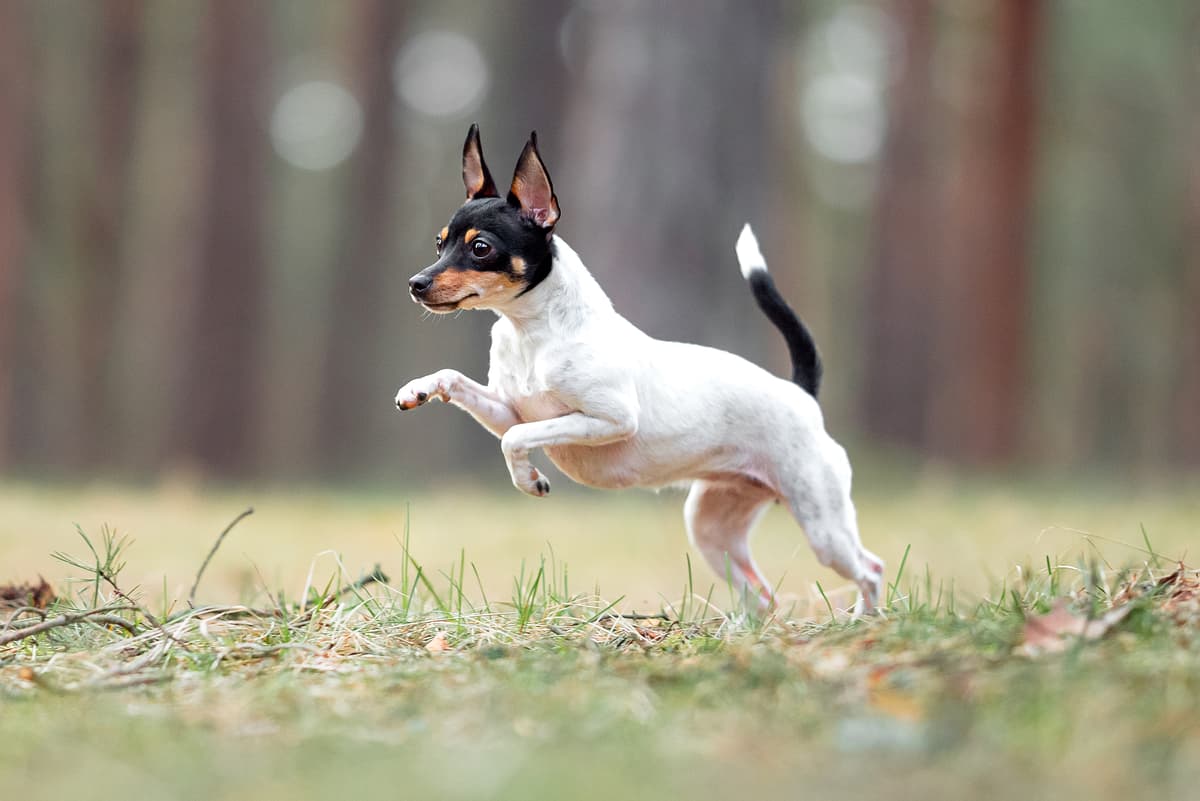American Toy Terrier vs English Bulldog
Discover the differences between American Toy Terrier and English Bulldog to make the best choice for your situation.
Try different breeds

American Toy Terrier
Lively, alert, and affectionate, this tiny companion thrives on attention and play. Compact yet confident, the American Toy Terrier is adaptable and forms strong family bonds.

English Bulldog
Stocky, courageous, and affectionate, this breed charms with its wrinkled face and calm nature. Loyal and gentle, it thrives as a loving family companion.
Quick comparison
Small
2.5–3.6 kg
Short, smooth
12–15 years
2.3–3.2 kg
High energy
Medium
23–25 kg
Short, smooth
8–10 years
18–23 kg
Low activity needs
Personality & behavior
Compare the personality traits and behavioral characteristics of both breeds.
American Toy Terrier
Enjoys people, bonds closely with family members
Learns commands and routines quite quickly
Very active, loves frequent movement and activity
Enjoys games and interactive activities daily
Adjusts well to new homes and settings
English Bulldog
Affectionate and gentle with family and children
Learns basic commands with some patience
Prefers lounging over vigorous physical activity
Enjoys play but tires fairly quickly
Adjusts well to most living environments
Care needs
Exercise, grooming, and daily care requirements
American Toy Terrier
Patellar luxation, dental issues
English Bulldog
Brachycephalic syndrome, skin fold infections
Suitability
How well each breed fits different living situations and families
American Toy Terrier
Good option
Easy to train with clear guidance, but can be sensitive to mishandling
Excellent fit
Small size and moderate exercise needs suit compact living spaces well
Moderately suitable
Enjoys activity but may tire quickly during intense exercise sessions
Not ideal
Delicate build and sensitivity make them less suited for rough handling by toddlers
Possible match
Can adapt to other pets if introduced slowly and supervised closely
Prone to stress
Dislikes being left alone for long periods and may develop separation anxiety
English Bulldog
Good option
Easygoing, low-maintenance nature suits owners with limited dog experience
Excellent fit
Moderate exercise needs and calm demeanor work well in small living spaces
Not ideal
Low stamina and breathing issues make them unsuited for high-activity lifestyles
Very suitable
Gentle, patient, and tolerant with young children when properly socialized
Usually compatible
Generally sociable but may need guidance with other pets, especially dogs
Not recommended
They struggle with long periods alone and are prone to separation anxiety
Breed strengths
What each breed excels at and their best qualities
American Toy Terrier
- Alert watchdog with keen senses
- Energetic and playful companion
- Low grooming requirements due to short coat
- Strong loyalty to primary handler
- Quick learner with consistent training
English Bulldog
- Affectionate with family members
- Generally good with children
- Low exercise requirements
- Minimal grooming needs
- Adaptable to apartment living
Challenges & considerations
Potential challenges and considerations for each breed
American Toy Terrier
- Prone to separation anxiety when left alone
- Fragile bones require gentle handling
- Can be wary of strangers and other dogs
- High prey drive may challenge small pets
- Sensitive to cold due to small size
English Bulldog
- Prone to respiratory problems
- High risk of overheating
- Susceptible to skin infections
- Can be stubborn during training
- Tends to drool frequently
Ready to choose your perfect breed?
Learn more about each breed or compare other breeds to find the perfect match for your lifestyle.
Discover more helpful tools
Make use of our other free tools to get the most out of your pet experience
